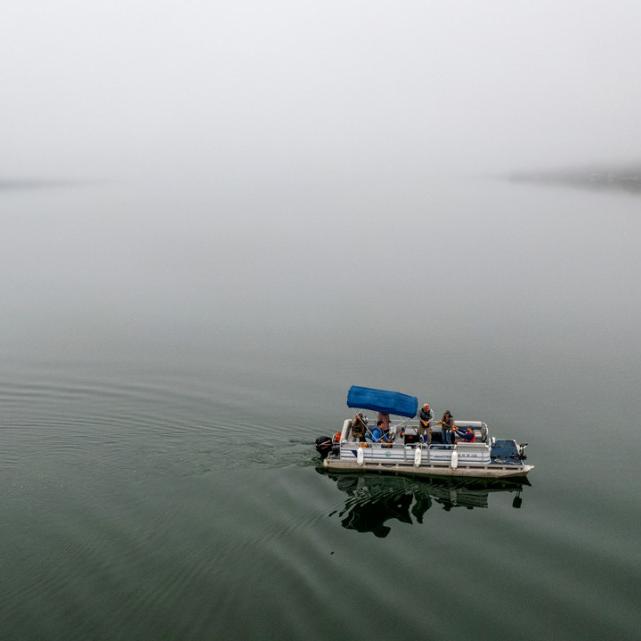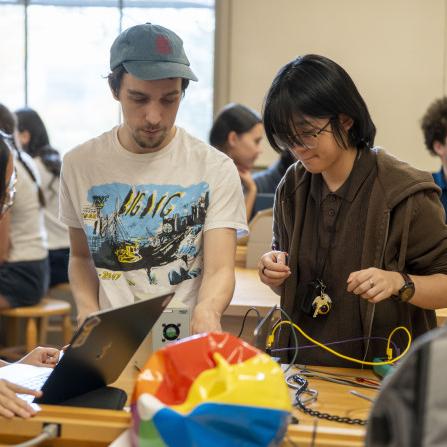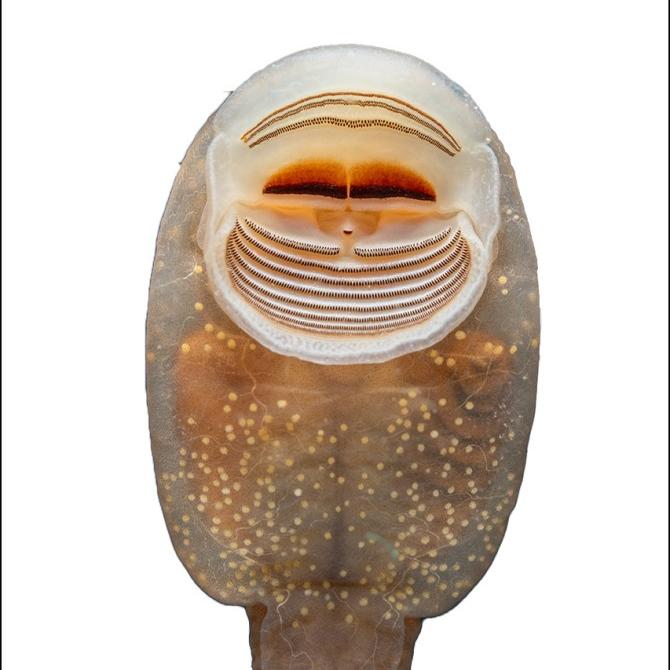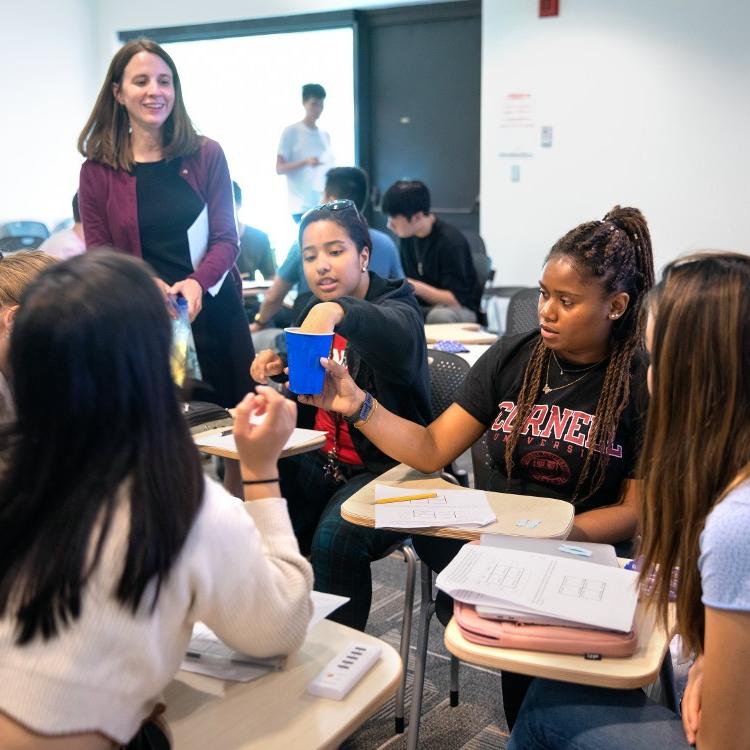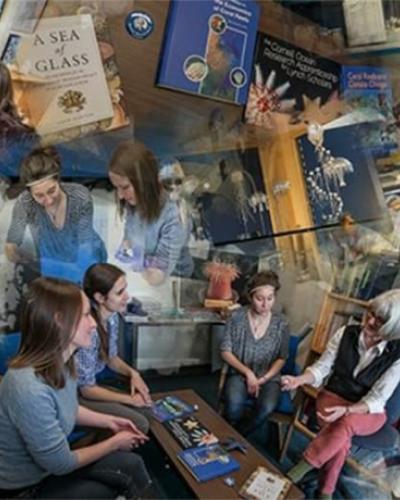It’s an underwater horror: the arms of starfish twist and detach from the body; the organs extrude through the skin; and the starfish die. This is sea star wasting disease, which has decimated populations in waters stretching from Mexico to Alaska and all the way to Southeast Asia. “It’s fair to call it the largest ocean wildlife epidemic we’ve ever seen,” says C. Drew Harvell, , whose research revolves around ocean biodiversity and sustainability.
“We study the transmission and impacts of infectious disease in a changing ocean,” Harvell says. “Our research is always in an environmental context, because we’re studying the way ocean change drives ecologically important things.”
Until recently, foundation species like corals and seagrasses had been the main focus of Harvell’s career. With the sea star—a keystone species and one of the most successful ocean-floor predators—Harvell has come full circle on the food chain. Each of these organisms has profound effects on the balance of ecosystems.
Sea Star Wasting Disease, a Marine Devastation
During the outbreak of sea star wasting disease, the first challenge was identifying the microbe that causes it—akin to finding a needle in a haystack. Harvell and her team collaborated with Ian Hewson, Microbiology, to pinpoint the virus. Her team also documented its devastation in the field. It affects 20 species and has all but wiped out one of the most common, the sunflower star. Harvell and others are now working to designate the sunflower star as a species of concern.
“The ecological impacts of removing a top predator are huge,” Harvell says. “And their prey is responding. There have been widespread urchin outbreaks, and urchins are like the cows of the ocean. They mow down every bit of kelp-bed, and you’re left with a pavement.”
Harvell and her lab have also discovered that the disease kills more quickly in warmer temperatures. This means the devastation could worsen without sustained efforts to fight climate change.
A glimmer of hope is that some stars have immunity. “That’s a very important part, and we’re working, along with many others, on understanding the immune response,” Harvell says.
Over the past five years, Harvell has led a coalition of more than 40 scientists to form the Ecology of Infectious Marine Diseases Research Coordination Network, funded by the National Science Foundation. This group has been working to understand, document, provide solutions, and share information about sea star wasting disease and other diseases, with the goal of sustaining a healthier ocean.
Why Marine Health Is Important
A big component of marine health is protecting foundation species. Harvell has multiple projects that look at the dangers these species face, as well as studies that showcase their benefits and importance.
For instance, Harvell’s team is providing further evidence of how vital seagrasses are to tropical ecosystems. Ongoing studies in Indonesia and Myanmar have found that corals and farmed algae in seagrass beds are much healthier than those outside of beds. In one study, Cornell postdoc researcher Joleah Lamb, funded through The Nature Conservancy, has even shown that seagrass beds reduce pathogenic bacteria. This research appears in the February 2017 issue of Science.
“We found that the levels of bacteria were very high right at shore where there’s no seagrass, but as Joleah sampled farther out inside seagrass beds, there was a steep drop off,” Harvell says. “There are fewer pathogenic bacteria downstream of seagrasses and in the seagrass bed. Our conclusion is that seagrass provides an ecosystem service of filtering and detoxifying bacteria.” For an Indonesian island without a septic system, this service may be vital for maintaining health at multiple levels.
Like many elements of the ocean’s ecosystem, however, seagrasses are vulnerable. Another large project in Harvell’s group is studying eelgrasses in the Salish Sea, the body of water that stretches from Seattle to Vancouver. The seagrasses there have been unusually healthy compared to worldwide populations, Harvell says, but last summer, she and her students found that over 50 percent of the seagrasses in their beds had become diseased.
“We think this disease is causing a rapid decline,” Harvell says, “and it’s another temperature-sensitive disease, so it’s likely to get worse with climate warming.”
Harvell’s lab is currently conducting field surveys as well as lab experiments to understand the extent of the disease and its behavior in different environmental conditions. They are teaming with Carla P. Gomes, Computer Science, who directs the Institute for Computational Sustainability, to develop new diagnostic tools.
Inspired Marine Biologist Inspires Undergraduates
Harvell says she wasn’t set on becoming a marine biologist in particular. Her love for the natural world was broad. “Whether it was the ocean or birds or mountains or flora,” Harvell says, “it could have been any of those things.”
In college Harvell had the opportunity to study at Friday Harbor Laboratories on San Juan Island in Washington. “That was it, no question,” she says. “To be in an environment with top scientists and so many other young people, all diving and adventuring—it was a wonderful environment that really set my compass for life.”
The inspiration of that place is one of the reasons that Harvell directs the Cornell Ocean Research Apprenticeship for Lynch Scholars (CORALS) Program, with funding from alumna Susan E. Lynch. The CORALS Program brings six Cornell undergraduates to Friday Harbor Labs every spring semester to apprentice as marine researchers. “It’s such an opportune place with top research facilities for our students,” Harvell says. “I’m proud of how that program is training and inspiring our very talented undergraduates to become front-line researchers. They benefit a great deal from working on these research projects, but they’ve also contributed a lot, too.”
She adds, “I don’t know that there are many places that would support this kind of program, but Cornell has a real interest in the environment and sustainability. People sometimes ask me why I teach at Cornell, so far from the ocean, but the study of oceans is global. And with the Atkinson Center for the Environment and the quality of the students and my colleagues, Cornell is outstanding.”
Sea of Glass, an Artistic Celebration of the Ocean’s Diversity
With the health of the oceans now at stake, Harvell looks to educate outside the academic environment. She recently found a new medium to relay the beauty of the ocean’s biodiversity and her concern for it to the public—art.
In the nineteenth century, the father and son team Leopold and Rudolf Blaschka created over 10,000 glass sculptures of marine life for use as educational tools. Cornell owns 570 of these sculptures, and Harvell wanted to find out how many of the creatures depicted still survive in the ocean today. Her quest resulted in the book Sea of Glass (University of California Press, 2016) and the documentary film Fragile Legacy, directed by David O. Brown.
“The Sea of Glass project has been a kind of happy place for me,” Harvell says. “It’s a celebration of ocean diversity and the amazing riches we have. And I can use that to teach about ocean biodiversity and sustainability.”
Through exhibitions of the sculptures, talks, and attendance at film festivals, Harvell says she’s become a better communicator of her science. She’s also come to appreciate the persuasive power of art. “I’m really enjoying using art as a vehicle to communicate about environmental issues,” she says. “It feels transformative. I’ve watched certain films, for example, lead to rapid changes in legislation.”
Sustaining marine ecosystems will require this kind of creativity and commitment. “We try to focus on the positive things that we’re doing,” Harvell says. “There have been some huge improvements—Our Ocean conference for example, run by John Kerry [former Secretary of State] who brought his peers from all over the world to make clear cut pledges for progress. That was a real shot in the arm. But now, I’m really worried about our ability to make progress on climate change.”

